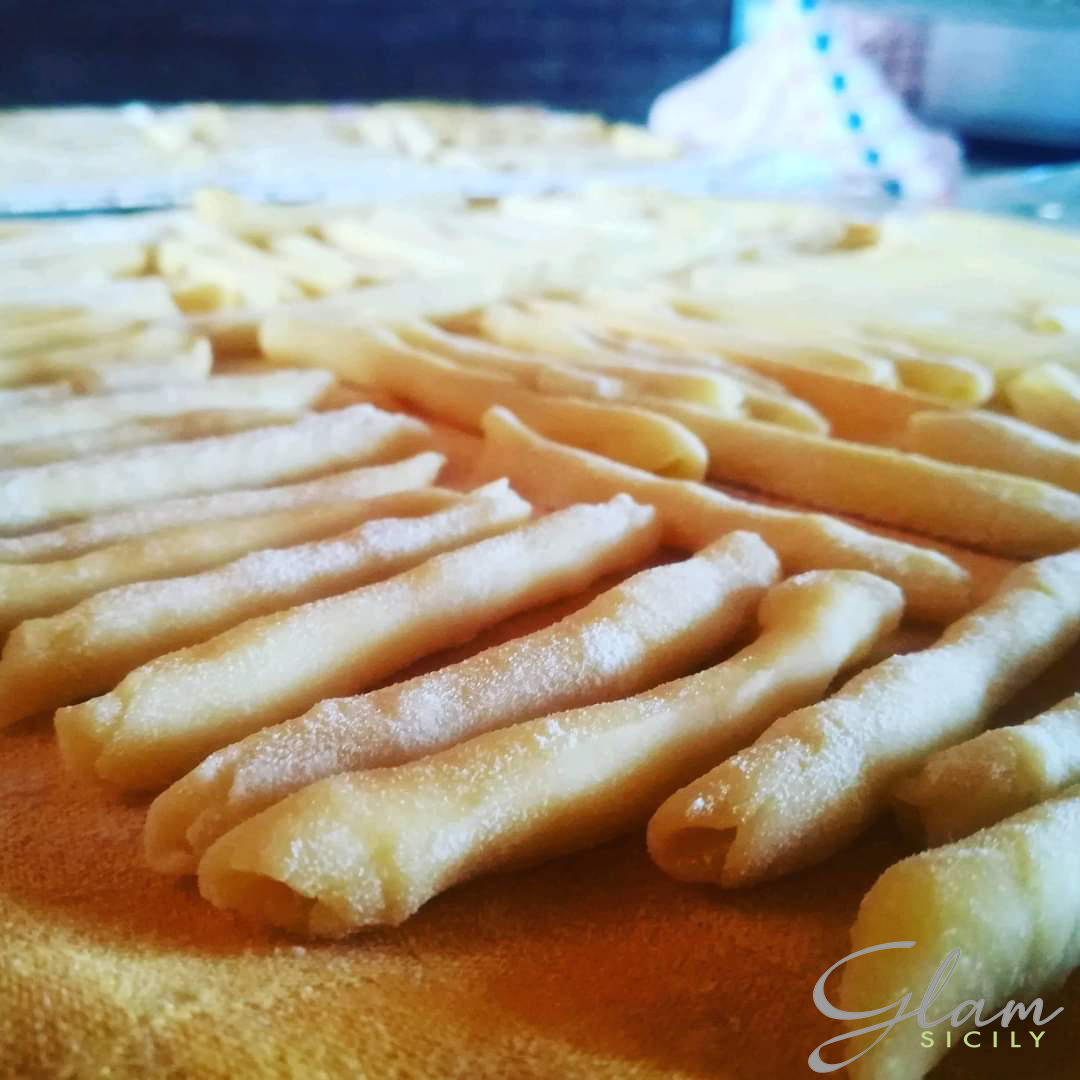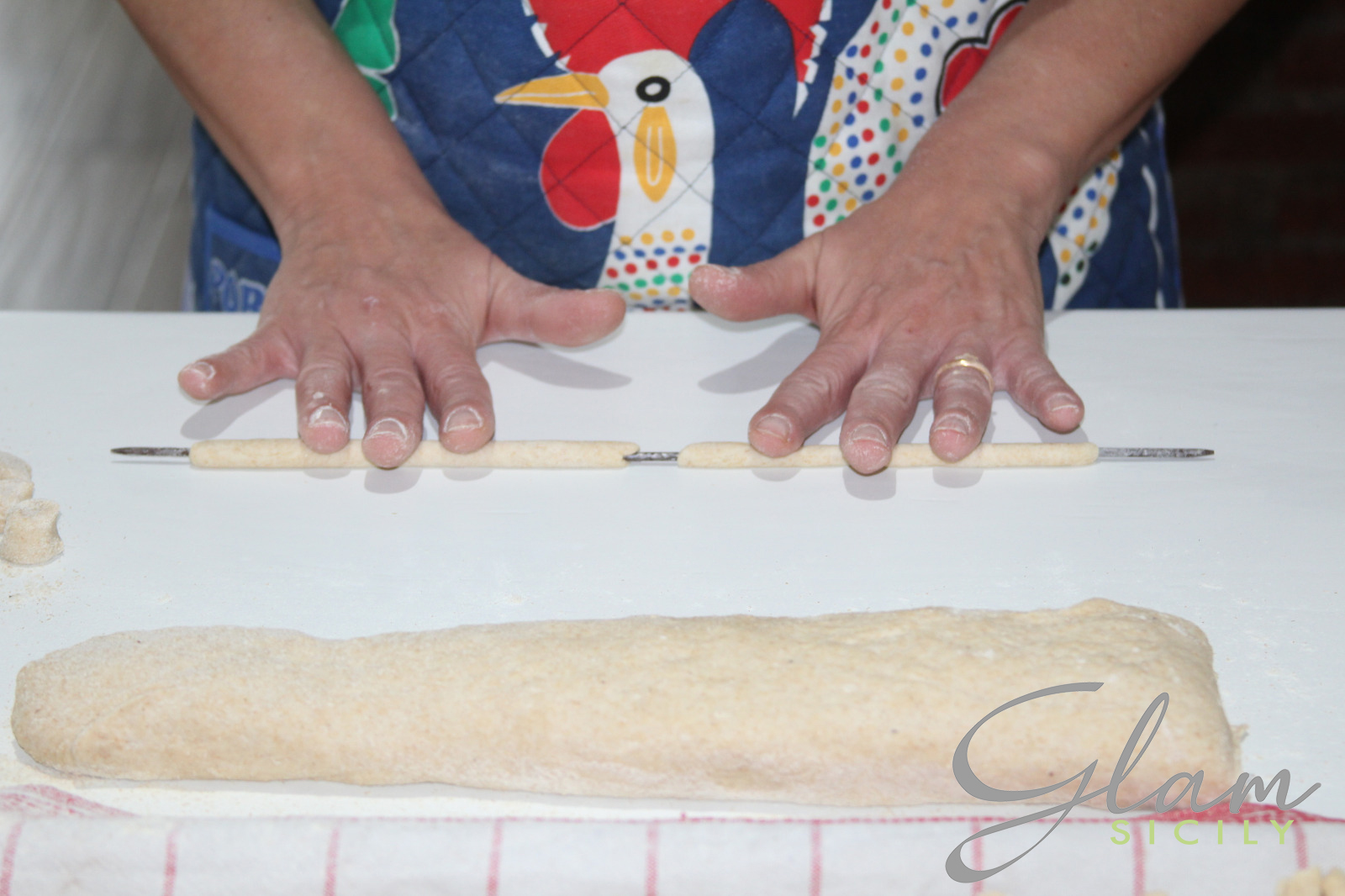I have already talked about the ritual of fresh pasta. Grandma ‘Nitta was the queen of doughs but above all of macerroni! They could not miss Carnivale! “Pigghia i tabbarè ca facemu i maccarruni” (take the trays we make macerroni) and the party began. Flour everywhere, shapes, molds and ferretti (thin wire) to spread macerroni or whatever came out of it. Forming them perfectly was a professional undertaking. I remember that I fought many times with the dough before seeing a decent macerrone! But for us children it was a fun pastime. My brothers used to compete. Today when we get together we often find ourselves around the table to spread macerroni, and before we know it, it’s a party! Of course they were accompanied by a special sauce! Grandma ‘Nitta prepared it the night before. “I was awake until 3,” she said. She liked to cook at night She cooked it for at least 5 hours. But we will see the recipe for grandma’s special sauce later. The table was set perfectly in the dining room with hot macaroni and then all of us wearing masks, ready to celebrate Carnivale of Acireale!
THE TRADITION
The origins of fresh pasta are curious to say the least: in fact – probably thanks to the ease in finding the ingredients – the recipe developed in parallel and without mutual influences both in Europe and in the Middle East. Moreover, this preparation was known since the times of the ancient Greeks, especially in the area of the then Magna Graecia which also included Southern Italy.
The real step forward in the preparation of pasta took place in the Middle Ages when the cooking method of boiling replaced what until then had been among the most used, namely the use of the oven. At the same time, numerous local traditions began to develop in Italy which differed from each other in size and format. After all, the drying of the pasta made it possible to transport it by sea even for long distances, favoring the beginning of a thriving market that is still particularly flourishing today.

RECIPE
500 grams of durum wheat flour from Timilia
200 gr of Mallorcan flour
25 gr of oil
380 gr of water
15 gr of salt
Pour the re-milled durum wheat semolina and mallorcan into a bowl and make a hole in the center. Pour the warm water, the oil and the salt into the hole formed and work with one hand until the flour has absorbed all the water. At this point, pour the dough (which is not yet compact) on the floured work surface and knead for about 10 minutes, until you have a very hard and smooth dough. Form a ball, cover it with an upside-down bowl and let the dough rest at room temperature for about an hour. After the necessary time, resume the dough, which at this point will be softer and easier to work, and roll it with the hands on the work surface forming a cylinder. Cut it into pieces and with each piece form long cylinders roughly the size of a little finger, then cut them into pieces of 5 – 6 cm.
Place on the wire (you can also use a skewer stick instead of the wire) two small cylinders of pasta thus formed and press lightly so that it almost completely penetrates the pasta; close the dough around the wire. First place the palm of one hand on it, then with both hands and, exerting a slight pressure, roll the macarone back and forth until the dough has rolled up around the stick and stretched. Then gently remove the macarone from the wire and place it on a floured base or on a clean cloth, taking care to arrange it without ruining its shape. Continue like this until all the macaroni are ready.
At this point you can immediately cook your homemade macaroni, or you can cover them with a light cotton cloth and let them dry for up to 24 hours.
I usually prepare them the night before, cover them with a light and clean towel and let them dry until the next day.






Leave A Comment